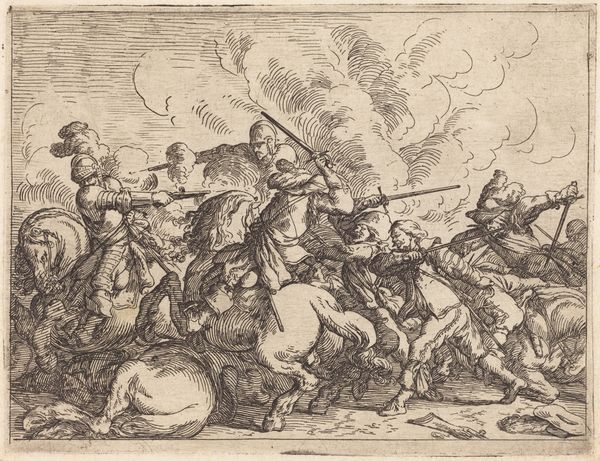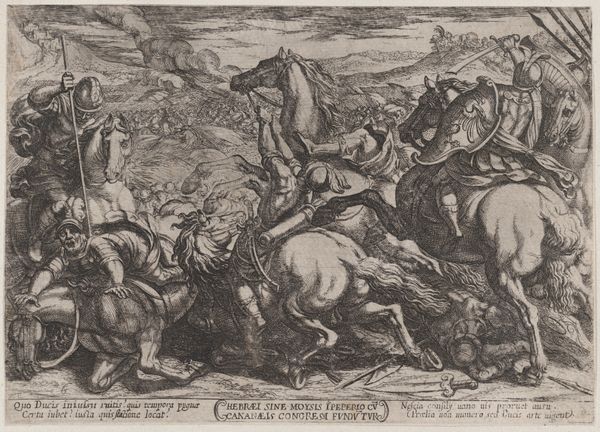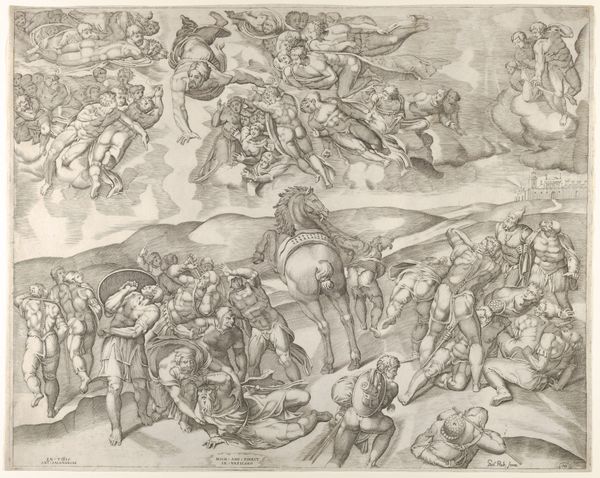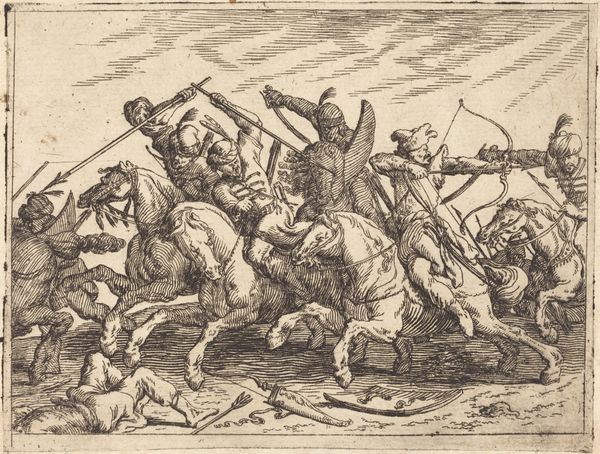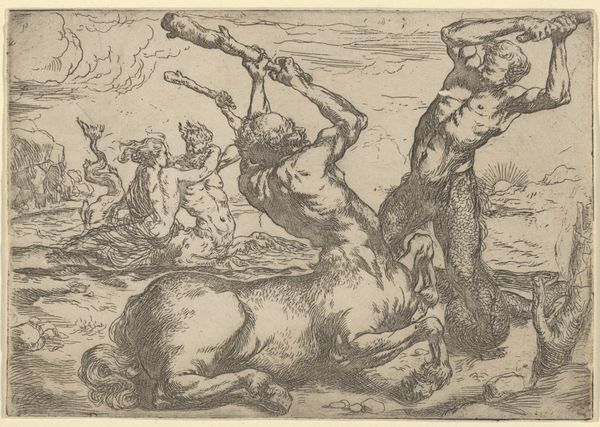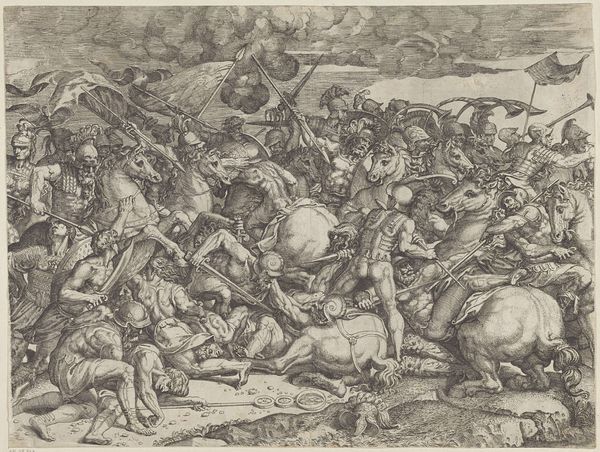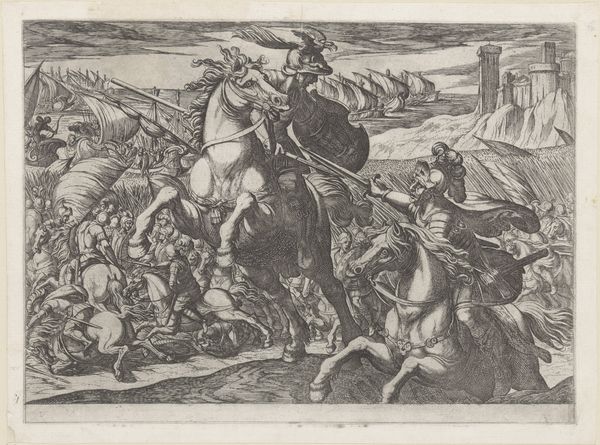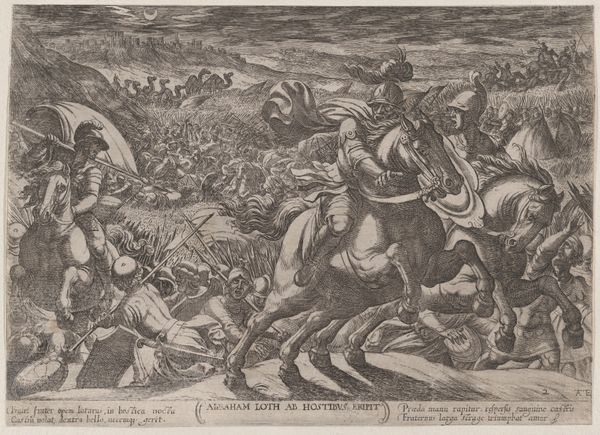
print, engraving
#
ink drawing
#
baroque
#
pen drawing
# print
#
figuration
#
line
#
history-painting
#
engraving
Copyright: National Gallery of Art: CC0 1.0
Johann Wilhelm Baur created "Capricci di varie battaglie," a capriccio of various battles, during a time of frequent and widespread conflict in seventeenth-century Europe. In this battle scene, Baur’s decision to portray soldiers with turbans and curved swords introduces questions about cultural identity and representation. The soldiers’ attire marks them as "other," likely referencing the Ottoman Empire, which was perceived as a threat to Europe at the time. Consider the historical context; artistic depictions of battles often served to reinforce political and cultural boundaries. How might the image have shaped perceptions of foreign cultures and power dynamics? While glorifying military prowess, the detailed rendering of the chaotic clash may also serve as commentary on the human cost of conflict. Ultimately, Baur's print reflects the societal anxieties and cultural biases prevalent in his time. It prompts us to reflect on how historical narratives are constructed and how they shape our understanding of both the past and present.
Comments
No comments
Be the first to comment and join the conversation on the ultimate creative platform.

